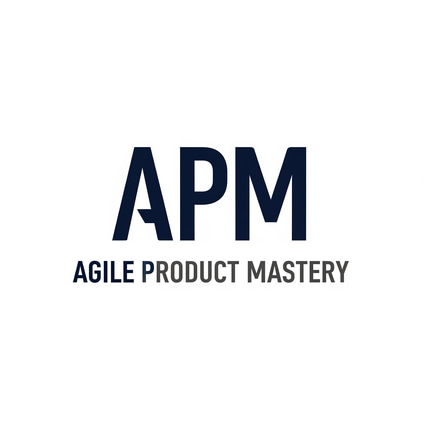Regulatory Programs Don’t Fail Loudly… They Fail Quietly
Regulatory and product programs don’t usually implode—they erode. Learn how to spot early warning signs, re-engage teams, and reset momentum before failure hits.
Written by: Matt Gregory - Founder Agile Product Mastery
6/19/20253 min read


“Programs rarely implode. They normally just erode.”-
— A CEO’s comment on a LinkedIn post I shared about this very topic last week... And he's dead right.
Whether you’re running a regulatory program or scaling a complex product initiative, the early signals of failure are rarely explosive.
They’re quiet.
Subtle.
Creeping.
Missed feedback loops.
Disengaged SMEs.
Strategic silence.
Progress that moves — but with no urgency or outcome.
In both product and regulatory delivery, momentum is everything.
Lose it early, and you risk shifting from leadership into recovery mode before you even realise you’re behind.
This post unpacks three warning signs your initiative — whether it’s a regulatory change program or a cross-functional product rollout — is starting to drift. And more importantly, how strong leaders spot the erosion early, and reset the rhythm before it becomes a firestorm.
1. Your SMEs Are Fading — Not Fighting
At the start of every program, your subject matter experts — particularly traders, sales leads, legal or risk SMEs — show up with energy. Opinions. Pushback. Debate.
But then… they start disappearing.
Not noisily. Not with a bang.
Just a quiet pullback.
Fewer comments in working groups
Minimal responses in chat
Camera off
Energy flat
This isn’t rebellion. It’s disengagement.
And in regulated programs, disengaged SMEs are fatal. You need their insights to shape real-world solutions. When they fade, your risk of compliance failure skyrockets.
So what do strong leaders do?
You make their effort matter — visibly and fast.
Tighten the feedback loop. Show how their insights directly impact what’s being built.
Celebrate quick wins. Don’t wait until go-live. Highlight every real result tied to their input.
Tie effort to impact. Remind them: this isn’t just a project — it’s protecting the license to operate.
SMEs don’t fade because they don’t care. They fade because they don’t see the win.
Make it visible — and they re-engage.
2. Progress Isn’t Fine — It’s Just Slow
You’re ticking off tasks. Things are moving.
But…
Milestones drift slightly
Urgency disappears
Meetings feel more status, less momentum
Nobody’s panicking. But nobody’s pushing either.
This is a false sense of progress.
It’s the most dangerous phase because everything looks okay. Until it’s not.
So what do strong leaders do?
You reset the pace — without turning the place into a war zone.
Reframe the “why now.” Explain why speed matters — not to be fast, but to be first, safe, compliant.
Rebuild urgency with clarity. Urgency isn’t panic. It’s purpose.
Introduce consequences. Make it clear what slips mean — reputationally, regulatorily, and financially.
Regulatory programs don’t reward slow.
They punish drift.
3. Strategic Visibility Has Slipped
Here’s the big one.
Nobody is blocking your work.
But nobody is backing it either.
Leadership used to mention the program in town halls.
Stakeholders used to push for updates.
Now?
Crickets...
You’re visible… until you’re not.
And when programs lose top-down reinforcement, they quietly slide off the priority list.
So what do strong leaders do?
You show up at the right level — again and again.
Clear messaging. Translate complex delivery into business-relevant, risk-aware updates.
Clean reporting. Cut the noise. One-pagers. Dashboards that show action not admin.
Sponsor enablement. Give execs what they need to talk confidently about progress and risk.
Programs die in silence.
Stay loud.
Bonus Sign: You’re Already Writing the Recovery Plan
If you’re already spinning up a remediation workstream… it’s late.
By the time regulators are asking for evidence, when auditors are reviewing your delivery plan — the fire’s already burning. You’re no longer delivering. You’re now explaining.
And it’s never a good position to be in.
So, What’s the Move?
The best leaders I work with don’t wait for drift to become failure.
They sound the alarm early — and tactfully.
They don’t overreact to every slip.
But they watch the system — the energy in the room, the patterns of engagement, the voice of the SME, the tone of the sponsor.
They spot when things feel “off.”
And they act before the metrics confirm it.
Because once you’re in full-blown recovery mode, you’re no longer leading.
You’re firefighting.
Final Word: Erosion vs Implosion
One of the best comments I received on this topic said it perfectly:
“Programs rarely implode. They normally just erode.”
That’s the warning. That’s the truth.
And that’s why most remediation work isn’t fixing what blew up — it’s rebuilding what quietly broke down.
Need Help? That’s What We Do.
If you’re seeing early signs of drift in your program — or worse, already planning remediation — don’t wait for things to implode.
Our sister firm, Baltimore Advisory, helps leadership teams spot the drift early, reset the rhythm, and regain control.
From regulated financial change to high-stakes recovery programs, we step in before the spiral — or help lead you out of it.
Want to chat?
Let’s talk about how to keep your delivery clean, confident, and on track.
© Agile Product Mastery — Build a career that scales. Not one that burns out.
Powered by Baltimore Advisory Pty Ltd — ABN 97 678 312 475 — All rights reserved
Follow us on LinkedIn
